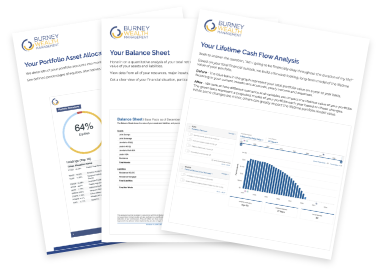The Permission to Spend Problem: When Saving Too Much Becomes the Issue | Long Story Short Podcast Ep 6

Watch or listen to the episode below:
Most financial advice focuses on one problem: helping people save more money. But what happens when you've been successful at saving and your challenge becomes the opposite?
In episode 4 of Long Story Short, Andy Pratt and Adam Newman explore the psychological barriers that prevent people from enjoying the wealth they've accumulated, along with practical strategies for investing and education planning.
The Psychology of Permission to Spend
The financial advice industry sends mixed messages. Suze Orman tells you to stop buying Starbucks. Meanwhile, books like "Die with Zero" encourage spending on experiences while you're healthy enough to enjoy them.
Both perspectives have merit, but they create confusion for people who've successfully accumulated wealth.
"Permission to spend. Maybe that's the follow up to this book," Adam suggests after discussing how many clients struggle with this transition.
The "Die with Zero" philosophy makes a compelling case. Your eighties and nineties are largely spent reflecting on earlier decades when you were active. You can either look back on IRA statements or memories of experiences and time with family.
But changing a lifetime of careful spending habits isn't easy. "It is psychologically debilitating for some people to spend beyond a certain point, even if they acknowledge they've accumulated probably a lot more than they need."
The Role of Professional Guidance
This is where working with a financial advisor becomes valuable in a different way than most people expect. Rather than just managing investments, advisors can provide perspective on when it's appropriate to spend.
"A lot of times we're encouraging them to buy the house, take the trip, spend time with family," Andy notes. "That's what we're encouraging people to do more so than telling them to stop ordering their caramel macchiato from Starbucks."
The key is having someone monitor your financial trajectory who can say with confidence: "You've got market tailwinds behind your back. You're not spending as much as you thought you would be spending."
Investing at All-Time Highs
The episode also discusses a common concern: What do you do with cash when markets are at record levels?
The data on this question is surprisingly clear. The average one-year forward return after reaching a new all-time high is almost 14%, with three and five-year annualized returns roughly at market average.
"The actual act of hitting a new all-time high in the market is not an indicator that things need to take some sort of turn for the worse," Adam explains.
But data doesn't eliminate emotional discomfort. When you've missed the bottom and markets have recovered, putting money to work at peaks feels risky.
The Time Travel Solution
Andy offers a mental framework that cuts through market timing anxiety: "Ask yourself, is the market likely to be at higher prices or lower prices five years from now?"
This simple question reframes the entire discussion. You're not trying to time the next correction or predict short-term movements. You're betting on the long-term trajectory of productive businesses.
For those still uncomfortable putting all their cash to work at once, dollar cost averaging provides a middle ground. "Put some of it to work now, wait a month. Put more of it to work, then wait another month."
This approach helps psychologically because if markets decline, you have more cash to deploy. If they rise, you've already participated in some of the gains.
Education Planning: 529s vs. UTMAs
The conversation shifts to education funding, where families face a choice between 529 plans and UTMA accounts.
The key difference comes down to flexibility. UTMA accounts are more flexible in what money can be used for but lock in the beneficiary. 529 plans restrict spending to education but allow you to change beneficiaries within the family.
"When you open a UTMA account for the benefit of a minor, that minor is the sole beneficiary. You can't change the beneficiary," Adam explains. "With the 529, you can change it to another family member."
This flexibility becomes important when funding education years in advance. Scholarship recipients, career changers, or children who choose different paths can all impact how education money gets used.
The Five-Year Gifting Strategy
For grandparents wanting to fund multiple grandchildren's education, 529 plans offer an accelerated gifting option. Rather than contributing the annual gift limit each year, you can contribute five years' worth at once.
"You can take that 95 grand, put it into the 529 this year. You do have to file a tax form for that, but it's not any kind of a taxable event," Adam notes.
The benefit is buying five more years of potential growth. The risk is overfunding if college costs less than expected or circumstances change.
Finding Your Balance
Whether it's spending in retirement, investing at market highs, or planning for education, the common thread is finding balance between competing priorities and psychological comfort levels.
The goal isn't to optimize every decision perfectly. It's to make choices that align with your values and circumstances while avoiding the paralysis that comes from overthinking every option.
Listen to the full conversation on Long Story Short:
The Burney Company is an SEC-registered investment adviser. Burney Wealth Management is a division of the Burney Company. Registration with the SEC or any state securities authority does not imply that Burney Company or any of its principals or employees possesses a particular level of skill or training in the investment advisory business or any other business. Burney Company does not provide legal, tax, or accounting advice, but offers it through third parties. Before making any financial decisions, clients should consult their legal and/or tax advisors.



